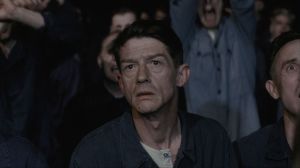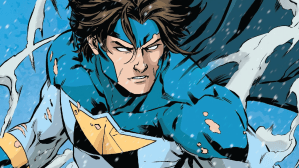Love them or hate them, the ’90s have shaped the American comic book industry in a way that is impossible to ignore or forget — and now there is a definitive history coming from TwoMorrows.
Videos by ComicBook.com
Author and comics historian Jason Sacks has spent the past four years putting together the most complete and accurate historical timeline of the ’90s in his new book, American Comic Book Chronicles: The 1990s, published by TwoMorrows with Sack’s collaborator Keith Dallas. The book will be in stores everywhere November 21.
“There were lines around the block to buy both the Death of Superman and the first issue of Bloodshot, and it’s cool to go back and see when fandom was so engaged and so passionate about this work,” Sacks told ComicBook.com.
He said that while the foil covers, gimmicks, and the eventual collapse that we remember from the ’90s are a huge part of the story, the idea of the Comic Book Chronicles project is to talk about what it was like at the time…which means seeing it as a bit more shiny than it maybe seems in hindsight. Using the example of Wizard magazine, which he had to pore over for the project, Sacks said that while they were often promoting books that seem forgettable or even terrible now, he understood that younger fans who grew up reading the magazine were likely thrilled by what those books were promising, even if they did not deliver.
And, yes, we remember that Image Comics changed the way we viewed comics art in the ’90s — but while a lot of that is remembered through the frustration of years of Liefeld wannabes and missed deadlines, Sacks noted that creators like Todd McFarlane and Erik Larsen have continued to buck expectations and remain relevant.
“It’s funny to me because some of these guys who were seen as being the rebels who would go off, do their things, and disappear, have ended up becoming some of the longest-lasting creators in comics history,” he said.
Others would see the damage that was happening in comics before it became catastrophic, and try to do something about it. Sacks told us that one of his favorite storylines of the decade was the rise and fall of Tundra Comics.
“One of the most interesting aspects of it to me is the rise of Tundra Comics,” he said. “Kevin Eastman started this company out of his profits from the Ninja Turtles, almost repenting to everything that the Turtles had done to the industry in the ’80s when that whole bust happened. So he threw all this money into comics. It was fascinating to chronicle the rise and fall of that company.”
On the other hand, a kind of tragic story was the rise and fall of indie icon Dave Sim, whose undeniable talents became largely irrelevant after he seemed to become determined to tear down his own legacy.
“He was really the leader of a whole movement; people were enormous fans of his work, he was making fantastically good money with Cerebus, it was one of the biggest comics of the 1990s,” Sacks said. “And then suddenly he comes out with Cerebus #186, which is largely a print issue that talks about how men are the light and women are the void and they suck men’s life away. And he went from being a hero to a pariah. You can chart some of the loss of readership of not just him but the small press movement as a whole to that one comic book.”
He pointed out that an irony there is that the issue featured a backup teasing Terry Moore’s Strangers in Paradise, which would go on to be known as one of the best female-centric comic books of all time.
Of course, it was not just the small press boom that collapsed by the end of the decade, and along his way,
“In January of 1990, 10.1 million units of comics were sold. By 1993 or so, 48 million comics were sold. By the end of the decade, only 7 million comics were sold,” Sacks said. “We went through this enormous boom and this equally tumultuous crash, and so much of the ’90s are tied around that era, around ’92 when there was absurd growth in comic companies, whether I twas Ultraverse coming out of Malibu, or the Bravura line, or Valiant. It was fascinating to see how these companies would rise up, capture the imagination of the industry for a short period, and then move on. By ’93, there was this feeling that classic superheroes were passe. Spider-Man, and especially Green Lantern, Batman, Superman, all had to go out of their way to get attention, and it really felt like people were much more aligned around characters like X-O Manowar and Brigade and Spawn. At the same time ,there was an enormous black and white boom that happened around that era. Dave Sim was on tour in the mid ’90s. Terry Moore was one of the biggest new creators of the decade, and of course, Jeff Smith ended up parlaying his ’90s indie work into being one of the best creators of his era. So much of the action happened away from mainstream comics that it almost flipped the narrative for a while.”
American Comic Book Chronicles: The 1990s will be on sale on November 21. You can pre-order it here.








